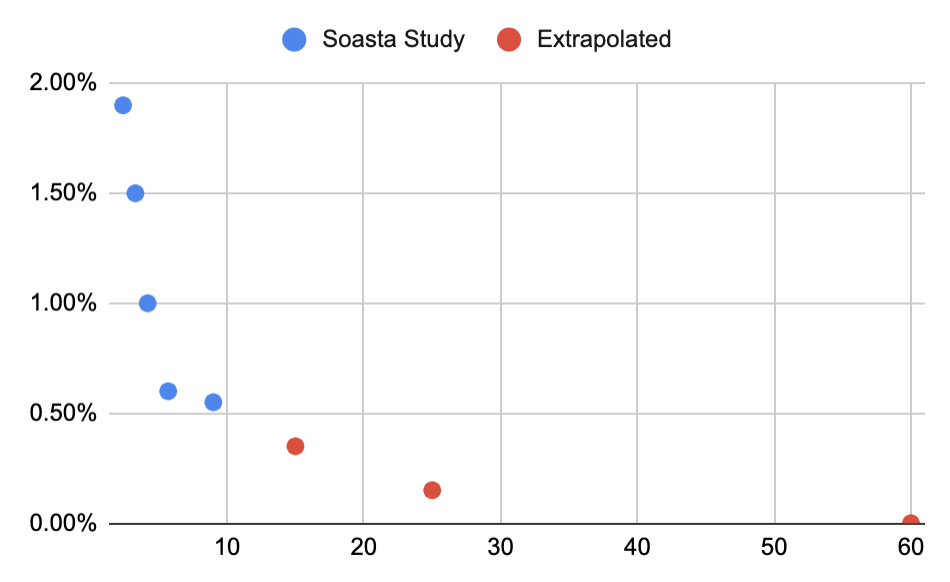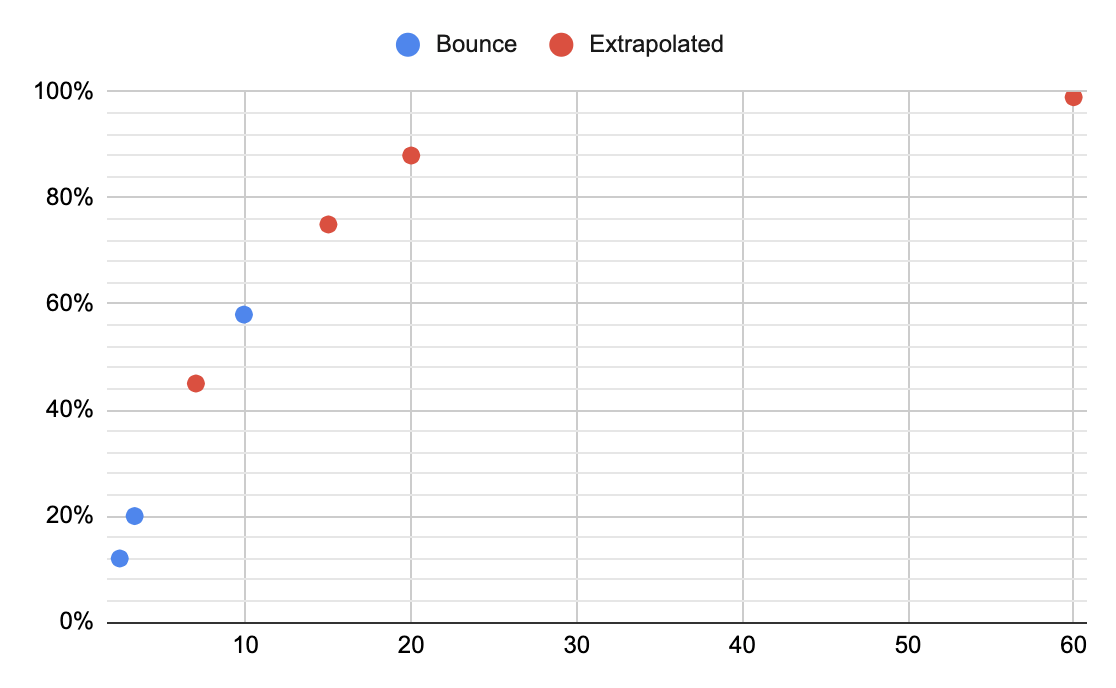1 - Expected post-Chinafy results
Time vs Money: What is the financial impact of a slow site?
Any performance marketer knows that time = money, especially as it relates to a website's loading speed. While statistics vary from site-to-site, and from one industry to another, we wanted to come up with some set of agreed stats that we could use for our analyses.
In all cases, performance for a typical site is typically looked at within the Global (non-China) internet context - that is, an environment where sites load between ~2 and ~8 seconds.
In China, however, the severity of page speed is a full magnitude or 10x larger than it is globally where some sites take up to 4-5 minutes to fully load.
The best way to gather these statistics is to generate them ourselves - and we will, as our clients start sharing anonymized analytics with us. In the meantime, however, we'll look at the available stats, and extrapolate towards a broader boundary more associated with web performance across the Great Firewall. Let's now look at some of the key metrics:
1. Conversion Rates
Conversion rates are broadly defined as the % of users that trigger a call-to-action (CTA).
For e-commerce sites, this could be making a purchase, and for other sites, it could be sharing your email address. Many of these results tie back to one SOASTA mPulse customer back in 2015. Again - while results may vary from site to site, we've decided to work with these given how widely quoted they are.

Figure 1: Our Speed Test caps out at 60 secs so we set a boundary value there equal to just > 0
As the results stop at the 10-second mark ('normal' for the Global Internet), we take an educated guess as to where these points would be beyond the 10 second mark. The study indicates that the conversion rate holds steady beyond 6 seconds, but from a practical perspective, these rates must drop off substantially after 10 seconds. Nobody will wait that long and so we've not held those constant, but tapered them off to zero.
2. Bounce Rate
Bounce Rate is the percentage of users that leave your site without clicking onto another page.
In most cases, a visitor thinks "Meh, this is wasn't what I was looking for - I'm hitting/swiping Back". In the same SOASTA study, they provide three data points for bounce rate going up to the 10-second mark.

Again, beyond the 10-second mark, as the loading time goes to 60 seconds the deliverability goes to zero, and the bounce rate must go to 100%.
3. Revenue
We looked hard for studies correlating advertising revenue to page speed - the closest we could find was from Bing which indicated that:
A 2 seconds increase in page loading time meant a 4.30% loss in revenue
Bing is fast to begin with, so it's dangerous to extrapolate out too far in the sense that the area of significance probably changes dramatically beyond 5 seconds. In any event, we take this metric and extrapolate it linearly. So a site that loads 10 seconds slower would have 5 x 4.30% = 23.50% less revenue. We take this one step further, however.
When we consider that the majority of sites take 20-30-40 seconds to load, the bounce rates are so extreme that we can't linearly extrapolate ad infinitum, we need to factor in that many sites simply don't load, and that advertising revenue is zero. As that's discontinuous, we define the change in revenue as:
Change in Time x 2.15% x 2 x (1+ Old_Bounce/New_Bounce)
Where 2 is because it just felt right, and (1+Old_Bounce/New_Bounce) is because readers can now actually, substantially, explore your site, and thus view 'some ads' whereas before they viewed 'no ads'.
Got questions?
Click here to get in touch with Chinafy.



1 - Expected post-Chinafy results






























